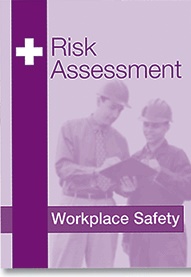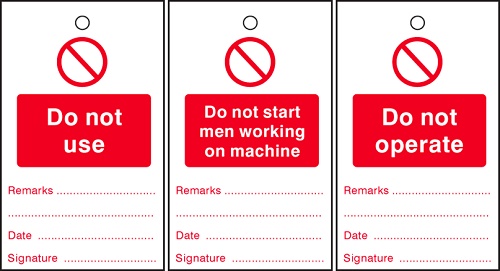There are certain workplaces and environments that present heightened risks to employees, which means that further health and safety measures must also be provided, in order to reduce the chances of workplace emergencies.
For workers who are at risk of being exposed to harmful substances and chemicals, it is absolutely essential that effective chemical safety signs are in use, in order to ensure that the associated hazards are reduced as much as possible. At Label Source, we provide a fantastic range of chemical safety signs and labels, which includes:
Chemical Hazard Warnings
These signs point out potential hazards causes by coming into contact with dangerous substances, such as acids, chemical irritants and more.
Diamond Warning Labels
These labels aid the safe storage and transport of dangerous substances, such as flammable materials, explosives, compression gasses and more.
Hazchem Panels
These sign panels are used on vehicles which transport dangerous chemicals and harmful materials - a legal requirement in the United kingdom. These can be customised to include details such as emergency action codes, substance information, and a range of other essential details.
To see our full range of Chemcial Safety Signs and Labels, click here!
As an employer, it is your duty to ensure that employees receive immediate care, if they are involved in an accident or fall ill at work. The Health and Safety (First Aid) Regulations 1981 state that employers should provide adequate tools and knowledge in the workplace, for an efficient response in the case of an employee illness or injury. This includes having first aid equipment which suits the risks of your working environment, and having enough staff who are first aid trained, in order to cope in a medical emergency. For businesses who deal directly with members of the public, this requirement is also extended to their needs, should complications from an illness or accident occur.
In order to provide the best level of protection, you should consider a number of factors, from the size of your organisation and working conditions, to the individual needs of your staff members. You should also ensure that these measures are properly highlighted to staff and other members of the public, in order to ensure that they are easily accessible in the event of an emergency.
Here are some essential first aid signs, warnings and instructions that should be displayed in your workplace:
First Aid Box
A first aid box is a basic requirement for any workplace, and should be easily spotted and located by anyone who needs it.
Defibrillator Safety Sign
Defibrillators are becoming more and more common in workplaces, particularly at organisations with public access or with particularly heightened risks. These pieces of medical equipment can provide life-saving attention when used by trained members of staff, and should be properly displayed for rapid attention to the medical emergency in question.
First Aiders List
This sign allows those with first aid training to be identified quickly in the case of a medical emergency, which is particularly useful for larger organisations.
For more medical safety and information signs, click here!
We're always talking about workplace health and safety on this blog, but most of the news stories we look at concern physical injuries: severed fingers, broken bones, that sort of thing.
However, recent stats suggest that the greatest threat to the health and safety of Britain's workers is not rotating blades, slippery surfaces, unprotected edges, or anything like that. According to the TUC, who surveyed roughly one thousand health and safety representatives across the UK, the main concern for this country's H&S officials in 2016 is...stress!
Before we take a closer look at that perhaps unexpected finding, here are a few facts and figures from this study:
- 70% of those surveyed said that stress is a problem where they work
- The most high-stress sectors are central government, education, and health services
- Since 2014, there has been a 13% increase in the number of medium-sized companies reporting stress as a key H&S concern
- Among the reasons cited for the increase in workplace stress were "low job security" and "long working hours"
Business owners often forget about stress when assessing risk in the workplace. It's fairly easy to identify obvious threats like moving parts and high voltages, but it's often far more difficult to address the unseen causes of stress and anxiety - this isn't a straightforward hazard that can be neutralised by putting up a safety sign. Reducing stress in the workplace tends to necessitate real shifts in the way that you and your employees work.
That may sound like a lot of hassle, but stress in your organisation is absolutely worth addressing, just as much as any other health and safety hazard. Stress engenders low productivity, poor staff morale, and high employee turnover; prolonged stress can also trigger an array of mental and physical health problems, such as depression, digestive disorders, short-term memory loss, muscle tension, low immune function, and even heart attacks.
If the TUC's findings have made you eager to tackle stress in your workplace, here are a few tips to get you started...
Stress Management Tips:
- Ensure that you are providing a comfortable, spacious, well-lit working environment for your staff.
- Check that all desks, chairs, work benches, et cetera are ergonomically correct.
- Provide equipment that works properly and is well-suited to the task(s) at hand.
- Set clear, achievable goals and realistic deadlines for your workers.
- Make sure that workers have the necessary training/information to do what's expected of them.
- Give your workers regular breaks.
- Help your staff to achieve a good work/life balance - avoid forcing them to work long/unsocial hours if possible.
- Implement a proper procedure for dealing with complaints and grievances.
- Welcome feedback from your staff and promote an open, ongoing conversation about working conditions.
- Offer flexible working hours and annual leave allowances where possible.
- If possible, provide extra support for your workers (e.g. transportation, counselling, special allowances for childcare, maternity, bereavement, etc.).
Click here to order a helpful stress management poster for your workplace!

Last week, we looked at the Alton Towers rollercoaster crash that has been in the news recently and asked what could be learned from the accident that resulted in a number of serious injuries and a multi-million pound fine for park owners Merlin Entertainments.
Probably the single most important takeaway from this mess concerns the importance of risk assessments. Paul Paxton, the lawyer who represented the injured parties in court, criticised Merlin's "catastrophic failure to assess risk" in a statement to the press, and it's hard not to agree with him; you can't help but wonder if the accident at Alton Towers could have been prevented with a more thorough assessment of possible dangers beforehand.
Of course, risk assessments are crucially important in any line of work - just because you're not working with rollercoasters and thrill rides doesn't mean that people can't get hurt on your premises! We at Label Source stock a range of risk assessment kits that will help you to carry out a thorough assessment of all the possible hazards in your workplace. Available kits include:
Click here to see our full collection of risk assessment kits.

Many people have been seriously injured - or worse - while performing routine maintenance on machinery that should have been perfectly safe. Isolating your machines using the correct lockout procedures minimises the risk of unexpected start-ups while maintenance work is in progress, protecting the lives and wellbeing of those doing the work.
Here at Label Source, we sell a range of maintenance tags to help you identify machinery and equipment that, for safety purposes, should not be used. With clear instructions like 'Do not use' and 'Do not start - men working on machine', our maintenance tags are ideal for locking out heavy machinery during services and repairs (although we also stock labels that warn of high voltages, poisons, harmful gases, and other hazards).
In case you're not convinced of how important maintenance tags can be, here's just one example of what can happen when machines aren't properly 'tagged out' while maintenance work takes place. In November 2005, two men in Lanarkshire, Scotland were cleaning the inside of an animal feed mixer when the machine started up unexpectedly and killed them both. The HSE investigated this incident and found that it could have been "easily prevented" if the machine had been properly isolated:
"The process of isolation means establishing a break in the power supply, normally by using a lockable switch, and then securing the switch in the 'off' position using a padlock to prevent it being switched back on until the work is finished." - John Madden, HSE Inspector, speaking in 2008
Once you have completed the lockout process described above, it's important to use a maintenance tag to label the locked machinery and inform other workers that the machine is not to be used (most maintenance tags leave space to explain why the machine is locked out).
The incident you just read about resulted - full story here - in a total fine of £63,750 for the two companies involved, but far more importantly, it led to two deaths that could easily have been prevented. Click here to browse our maintenance tag range, and don't let the same thing happen on your watch!